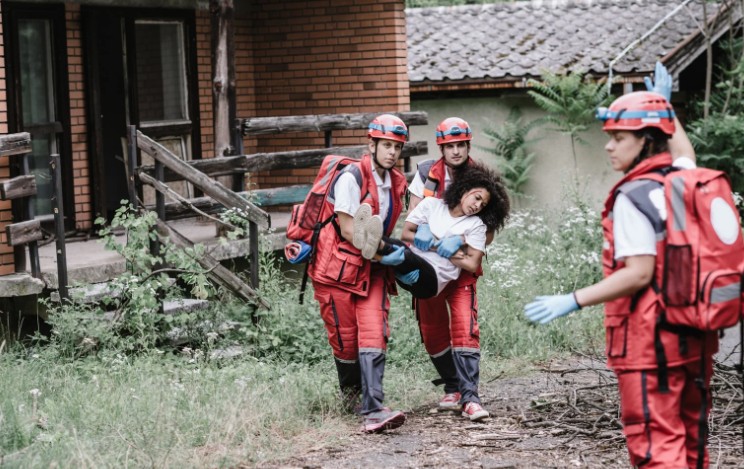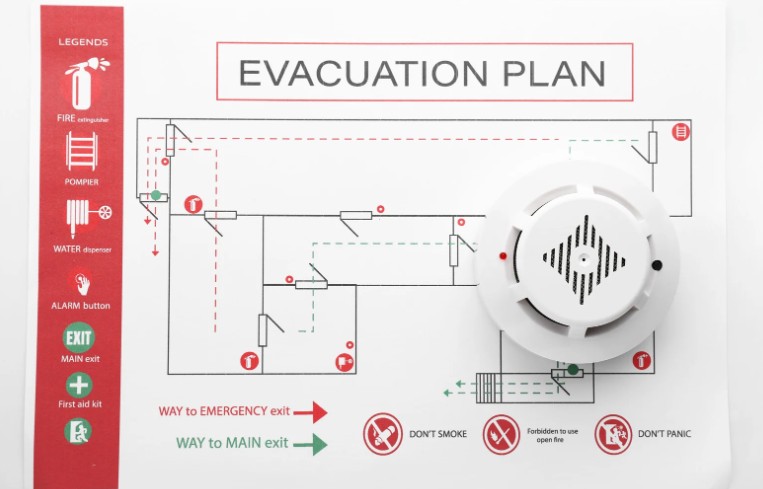When I first heard the term PEEP, I had no idea what it meant and wondered what does peep stand for. I came across it during a workplace safety briefing, and I remember thinking, “Is this some kind of training or just another acronym I’ll never use again?”
Well, it turns out PEEP is far more important than I initially thought — especially when it comes to fire safety and supporting people with mobility challenges.
So if you’ve been wondering what does peep stand for, and why it matters, I’ve put together this simple guide based on what I’ve learned.
What Does PEEP Stand For?
PEEP stands for:
Personal Emergency Evacuation Plan
It’s a tailored escape plan designed to help individuals safely evacuate a building during an emergency, especially those who might need extra support due to disabilities, health conditions, or temporary injuries.
I found it particularly relevant when thinking about fire drills in multi-storey offices, schools, hospitals, and even public venues. PEEPs are there to ensure no one is left behind or put at risk during an evacuation.
Who Needs a PEEP?
When I looked into it more closely, I realised that PEEPs aren’t just for people with visible disabilities. They’re meant for anyone who may struggle with independent evacuation in an emergency.
Here are some examples of people who might need a PEEP:
- Wheelchair users
- People with limited mobility
- Individuals with visual or hearing impairments
- Pregnant individuals in later stages
- People with temporary injuries (like a broken leg)
- Individuals with medical conditions like asthma or anxiety that can worsen during panic situations
It’s not about labelling — it’s about planning for safety and dignity during emergencies.

Why Is a PEEP Important?
At first, I thought fire marshals and standard evacuation procedures covered everyone, but the reality is they don’t always account for individual needs. That’s where PEEPs come in.
Here’s why I found them essential:
- They provide clarity – Everyone knows what to do, where to go, and who is responsible for helping.
- They reduce panic – A prepared plan can reduce stress during real emergencies.
- They support inclusivity – Ensuring that everyone, regardless of ability, is treated equally.
- They’re a legal requirement in many cases under UK health and safety law.
How Is a PEEP Created?
This part really interested me. A PEEP isn’t just handed out as a generic form — it’s a collaborative process involving the individual, HR or building management, and possibly health and safety advisors.
What all do PEEP will include?
- The person’s specific needs (mobility, sensory, cognitive)
- Details of escape routes and alternatives
- Whether special equipment is needed (like evacuation chairs)
- Names of designated helpers or buddies
- Plans for different scenarios (e.g., lifts not working)
It’s usually documented and reviewed regularly, especially if someone’s situation changes.

What’s the Difference Between a PEEP and a GEEP?
This question came up in my workplace, and it’s worth addressing.
| Term | Stands For | Who It’s For |
| PEEP | Personal Emergency Evacuation Plan | Tailored for individuals with specific needs |
| GEEP | General Emergency Evacuation Plan | Applies to groups, assuming no special requirements |
So, in short: PEEP = personal and GEEP = general. If you or someone in your team needs more support than what a GEEP covers, a PEEP is the right route.
Is a PEEP Legally Required in the UK?
Yes — in many cases, it is. Under the Equality Act 2010 and the Regulatory Reform (Fire Safety) Order 2005, employers and building owners must make reasonable adjustments to ensure everyone can evacuate safely. Ignoring these responsibilities can result in legal action or fines.
So whether you’re an employer, a building manager, or someone with access needs, it’s worth checking that proper PEEP procedures are in place.
How Can I Get One or Help Someone Else Get One?
If you think you or someone you work with needs a PEEP, here’s what I suggest:
What are the Simple Checklist to Start with?
- Speak to HR or the building’s fire safety officer
- Request a risk assessment specific to emergency evacuation
- Be open about your needs or temporary conditions
- Ask for a written, reviewed copy of the PEEP
- Make sure it’s updated if your situation changes
Even in public buildings like universities, hospitals, or museums, you can request support if you feel your safety may be at risk during an evacuation.

Final Thoughts: Why Everyone Should Understand PEEPs?
At first glance, PEEP might just look like another piece of workplace jargon. But now that I understand what does peep stand for — and more importantly, why it exists — I can see how vital it is for building inclusive, safe environments for everyone.
Whether you’re someone who needs a plan, a colleague, or a manager, being aware of PEEPs and how they work can make all the difference in an emergency.
So the next time someone asks, “What does PEEP stand for?” — I’ll know exactly what to say, and more importantly, why it matters.

Leave a Reply